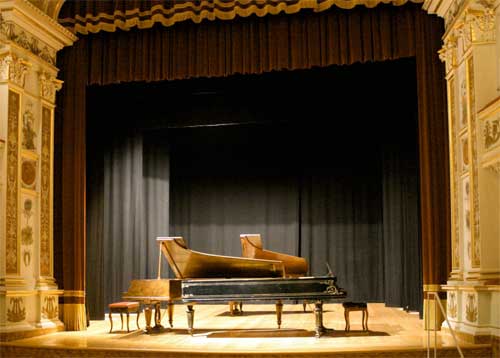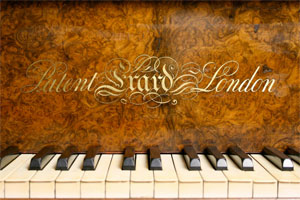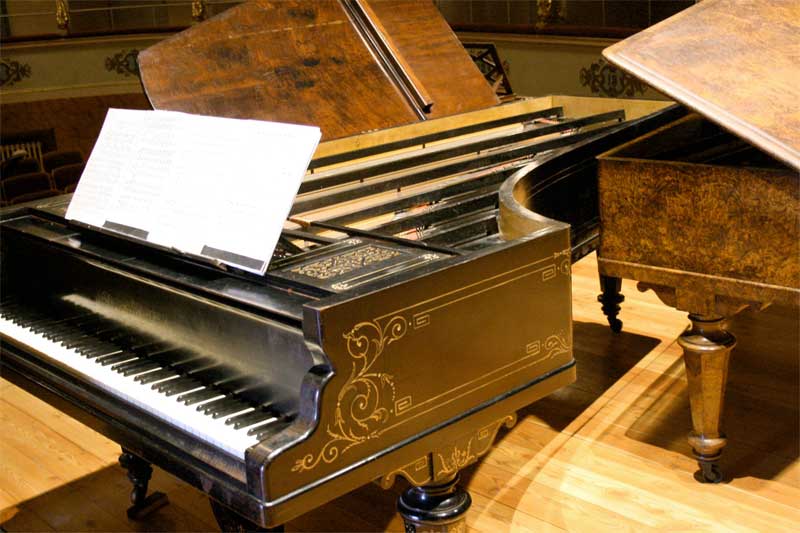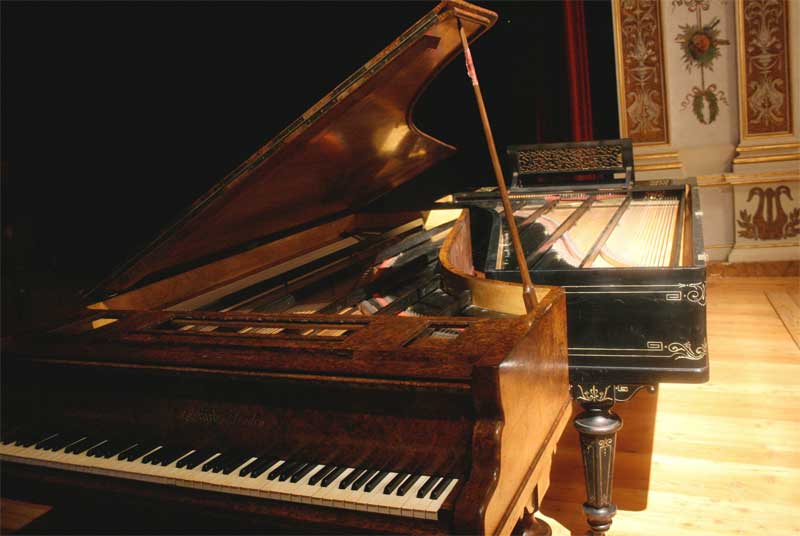
[ ROSSINI'S PLEYEL ] [ ARTICLES ] [ MUSICAL DOCUMENTS ] [ PIANO DUO LE PRELUDES ] [ MOVIES ] |
Two Érard de concert made in London

The Érard de concert of the theatre of Montecarotto (AN), for the 7th edition of the Festival Pergolesi Spontini
n. 7979 (cm 256, 1862)
n. 13678 (cm. 258 1873)
Restauro: F.Ponzi (2006)
In Great Marlborough Street, London, a Sébastien Érard workshop of was opened as early as 1786. By the mid-19th century, when the Érard piano had become the unrivalled concert hall instrument, the one preferred by most musicians, the Érard piano making company of London was officially registering around two hundred pianos a year, wholly akin in terms of quality and building characteristics to those produced by the parent company situated in Rue De Mail, in Paris. However, it appears that most of the Érard pianos were actually made in the London subsidiary. The Érard Romantic type had become successful after the adoption of the metal reinforcement bars (competing with the English production, in the 1830s), for its cantato and timbrato sound: "…a real cello…", according to I. Moscheles. The orchestral sound range and the refined and innovative double échappement action, precociously devised by Sébastien Érard (1821), genius of the piano action, and soon improved by means of the double spring devised by H. Herz, conferred to this type of piano a user-friendliness previously unknown in the instruments of the time. Those aspects were inseparable components of F. Liszt’s virtuoso and composition genius, who referred to his “trusted Érard" in his writings.
 The 1862 piano, made from walnut briar, preserves its original steel strings and has a single variant as compared with the Érard Romantic type: the somiere or wrestplank (that is the part of the instrument in which the pins are set, and that holds a traction of some 13,500 Kgf), is reinforced with wrought brass in the sector of the sharps.
The 1862 piano, made from walnut briar, preserves its original steel strings and has a single variant as compared with the Érard Romantic type: the somiere or wrestplank (that is the part of the instrument in which the pins are set, and that holds a traction of some 13,500 Kgf), is reinforced with wrought brass in the sector of the sharps.
The other 1873 instrument – made of dark blackened rosewood and adorned with elegant gilded arabesques – has its original string set entirely preserved (brass strings included). Whilst preserving the structure of the Romantic type, it applies a greater string tension to the mid-sharp sector, and reinforces the load-bearing structure by means of the sturdy wrought brass of the whole wrestplank frame.
Until the early decades of the 20th century, the Érard hammers kept the characteristic of transition between the use of leathers (a legacy of the ancient piano), and felt: in fact, three layers of decreasing thickness are overlain on the outer coating of that material (also made of felt), and, last of all, two thin layers of cowhide. The sound that comes from this construction feature is reminiscent of the fortepiano in the nasal nature of the transitory, assuming a fluty character in its brilliant sharp texture. Those aspects are combined in a singular manner with a very wide dynamic scale. The disguised percussiveness, and the depth of the low notes, complete the orchestral vocation of this type which was so much favoured by piano literature of the Romantic and post-Romantic periods.
F.P.


[ HOME ]